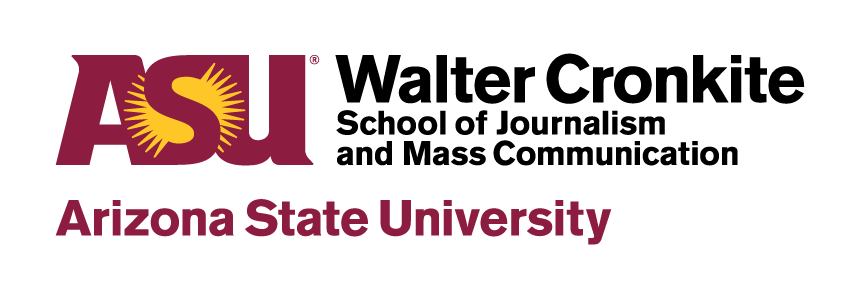PHOENIX – The National Center on Disability and Journalism (NCDJ) is now accepting entries for the 2024 Katherine Schneider Journalism Award and the Gary Corcoran Student Prize for Excellence in Reporting on Disability.
The Schneider prize is the only professional journalism contest devoted exclusively to disability coverage. It is supported by a gift from Katherine Schneider, a retired clinical psychologist who has been blind since birth. Schneider wants to encourage journalists to improve their coverage of disability issues, moving beyond “inspirational” stories that don’t accurately represent the lives of people with disabilities.
“There are so many worthy stories that need to be told, and with the NCDJ contest, we’re able to showcase many from around the world and recognize those properly conveying the needs, the struggles and the successes alike,” Schneider said.
In the professional contest, winners will receive a total of $8,000 in cash awards in large and small media categories. First-place winners in each category receive $2,500 and an invitation to speak about their work at an awards ceremony at ASU’s Walter Cronkite School of Journalism and Mass Communication. Second-place winners receive $1,000, and third-place winners get $500.
For the third year, the Gary Corcoran Student Prize for Excellence in Reporting on Disability, which recognizes the best work by college journalists on topics related to disabilities, also will be awarded.
The Corcoran student award honors the life and advocacy of the late Gary Corcoran, a wheelchair user from the age of 19 who worked to improve accessibility of housing, public transit, air travel and public venues across Phoenix. Prize amounts are $2,500 for first place, $1,500 for second place and $1,000 for third place. Entrants must have been enrolled as a student at the time of publication or broadcast, and the work must have appeared in a university-affiliated publication or program.
The award is funded by a gift from Gary’s sister, journalist Katherine Corcoran, who said her brother “was a tireless advocate for accessibility in the Phoenix metro area.”
“He knew firsthand the challenges that people with disabilities face, and good journalism – good storytelling – helps us understand as a society the importance of access and inclusion,” she said. “That’s why it’s so important to recognize students, the future of journalism, who are doing this work.”
Journalists working in digital, print, audio and broadcast media are eligible to enter both contests. Entries are accepted from outside the U.S., although the work submitted must be in English.
Entries for both contests must have been published or aired between July 1, 2023, and Dec. 31, 2024. The deadline to enter is Jan. 10, 2025. There is no entry fee, and reporters may self-nominate.
The entry form for the Schneider professional prize can be found at Schneider Prize Entry 2024 and for the Corcoran student prize at Corcoran Prize Entry 2024.
“These awards spotlight the ever-improving coverage across the globe of issues related to disability. We continue to see hard-hitting and innovative work that serves to educate the public and bring needed changes,” said Pauline Arrillaga, executive director of the NCDJ.
Entries are judged by professional journalists and experts on disability issues. Past judges have included PBS NewsHour anchor Judy Woodruff; Tony Coelho, former six-term U.S. congressman from California and the primary sponsor of the Americans with Disabilities Act; and Daniel Burke, former religion editor at CNN.
In 2023, first place in the Schneider Award Large Media category went to Beth Hundsdorfer of Capitol News Illinois and Molly Parker of Lee Enterprises Midwest for “Culture of Cruelty,” an investigative series produced as part of ProPublica’s Local Reporting Network. The second-place winner was former New York Times reporter Amanda Morris for her innovative look at how American Sign Language has been transformed by video technology and social media. Third place went to Christine Herman for her Side Effects Public Media story examining the barriers families face in finding appropriate mental health care for children and teens.
In the Schneider Award Small Media category, first place honors last year went to Caroline Ghisolfi, Tony Plohetski and Nicole Foy of the Austin American-Statesman for “Disabled & Abandoned,” which found that Texas’ system of care for people with disabilities is beset by crisis and violence. Illustrator John Greiner placed second for his comic series “Tales to Demystify: Not Welcome Here.” Placing third was Jennifer Dixon of the Detroit Free Press for “Rights & Wrongs.”
In the Corcoran contest, last year’s first-place winner was Meagan Gillmore, a graduate student at Carleton University in Ottawa whose winning entry looked at criticism among people with disabilities over assisted dying laws in Canada. Second place went to Julia Métraux for a piece that stemmed from a climate change course she took at the Graduate School of Journalism at the University of California, Berkeley. Placing third were Erin Gretzinger, Christy Klein and Erin McGroarty of the University of Wisconsin-Madison for a story that explored past, present and future efforts, as well as challenges, to serve people with disabilities in Wisconsin.
The 2023 NCDJ contests garnered almost 200 entries from around the globe, including from journalists in Brazil, Uganda and Pakistan.
About The National Center on Disability and Journalism (NCDJ)The Schneider and Corcoran awards are both administered by the NCDJ, which is part of the Walter Cronkite School of Journalism and Mass Communication at Arizona State University. The NCDJ offers resources and materials for journalists covering disability issues and topics, including a widely used disability language stylebook. To learn more visit our website here.
Contact:
NCDJ Executive Director Pauline Arrillaga
(602)717-7979

